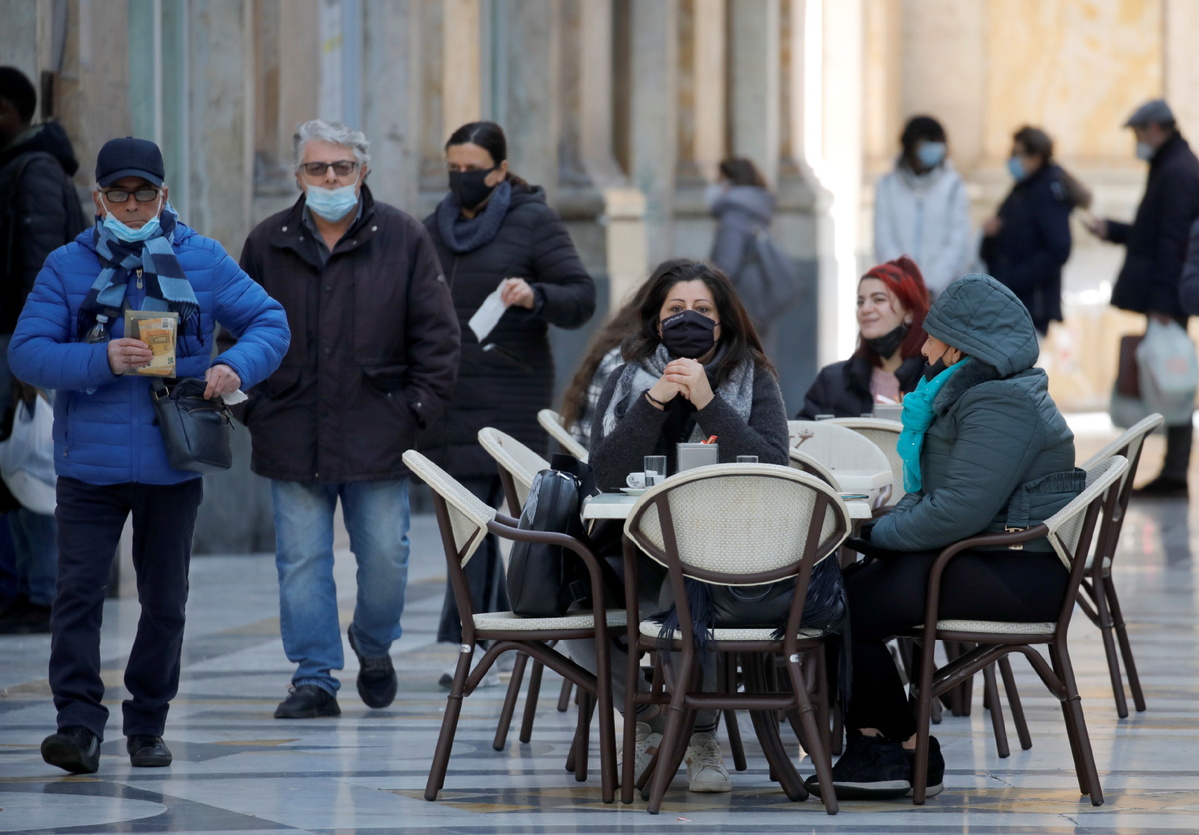Italy's coronavirus data remains in a bind, gov't expected to ease curbs


ROME - Italy's coronavirus indicators appear to have moved into a plateau as the government debates the extent to which it should ease the latest round of restrictions first put in place in December to curb the spread of the virus over the holidays.
According to information from the Ministry of Health, the country recorded 14,372 new coronavirus infections Thursday and 492 new deaths, compared to 15,204 and 467, respectively a day earlier.
Both figures fit into a broad range of 10,000 to 16,000 new infections per day and a daily mortality of 250 to 550. In both cases, one-day figures finished inside those ranges most of the time in the last three weeks, in contrast to peaks in November and early December that regularly daily numbers of more than 30,000 new infections and around 1,000 deaths.
In its latest bulletin, the Ministry of Health said the latest trends showed a per capita decrease in the infection rate despite a change in the standards used to define a coronavirus infection, a move that would normally see a higher infection rate if all other factors remained unchanged.
The latest figures are still far higher than the lows of last summer, but according to widespread media reports, the government is expected to ease restrictions in at least 15 regions or provinces, expected to move from red to orange or from orange to yellow on the country's three-color restriction scheme where red is the most restrictive and yellow the least.
Those moves, which are scheduled to go into effect Sunday, would make it possible for millions of Italians to have more freedom to venture out farther from home, while restaurants, coffee bars, shops, and factories would be able to operate with fewer restrictions.
Claudio Pica, head of the Rome chapter of the Italian Federation of Public and Tourist Operators, an industry group, praised the likelihood that Lazio (the region that includes Rome) would see restrictions eased when it moved from an orange to a yellow zone.
"It will be like a breath of fresh air for small companies," Pica told Roma Today.
But top health officials warn against complacency, with Massimo Galli, an infectious disease specialist with Milan's Sacco hospital, telling the Rome newspaper Il Messaggero, "the pandemic is still here: our containment methods have mitigated it, but it is not gone."
Galli warned that if Italians moved too far toward a pre-coronavirus lifestyle that "everything would go into a freeze again".
The developments come amid a slowdown in Italy's aggressive COVID-19 vaccine distribution strategy due to more limited availability of vaccines from Pfizer and BioNTech, Moderna, and an anticipated shortfall in vaccines from AstraZeneca, the next vaccine slotted for approval. That has started calls from some top health officials for Italy to purchase doses of Sputnik V, the vaccine developed in Russia.
"Obviously, we have problems with the vaccination campaign," virologist Matteo Bassetti told Il Meteo, a news site. "For that reason I think we have to think of alternative solutions. Hungary had already taken the step of purchasing Russian vaccines. I think we should do the same."
Thursday's figures pushed the total number of coronavirus cases in Italy to 2,515,507 and the cumulative death toll to 87,381, while the number of recoveries is approaching 2 million. The number of patients in intensive-care units was slowly declining at 2,288, down 64 fewer than the previous day.

































